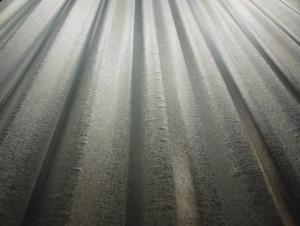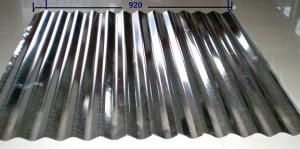Hot Dipped Galvanized Steel Sheets
- Loading Port:
- China Main Port
- Payment Terms:
- TT OR LC
- Min Order Qty:
- -
- Supply Capability:
- -
OKorder Service Pledge
Quality Product, Order Online Tracking, Timely Delivery
OKorder Financial Service
Credit Rating, Credit Services, Credit Purchasing
You Might Also Like
Product Description:
Standard: AISI, ASTM, BS, DIN, GB, JIS
Steel Grade: Q195
Thickness: 0.14mm untill 4.00mm
Place of Origin: Shandong, China (Mainland)
Technique: Cold Rolled
Surface Treatment: Zinc coated
Application: Roof, Door,Building
Model Number: GI-3
Width: 50-1500mm
Length: with coil (150 untill 900mater)
Zinc quantity: 40g/m2 untill 275g/m2
Thickness: 0.14mm ----4.00mm
Spangle: Bright unoiled
Width: 50mm---1500mm
Coil ID: 508mm or 610mm
Coil Weight: 2 ton untill 5 ton
- Q: What are the dimensions of the steel sheets?
- Depending on specific requirements or intended use, the dimensions of the steel sheets may differ. Standard sizes for steel sheets are often found in dimensions like 4 feet by 8 feet or 1 meter by 2 meters. Nonetheless, customizing the dimensions of the sheets is also possible to cater to project needs. To ensure the steel sheets meet the required specifications, it is crucial to specify the desired length, width, and thickness when placing an order.
- Q: What are the tolerances for steel sheets?
- The tolerances for steel sheets typically depend on the specific industry and application. However, common tolerances for steel sheets are usually specified in terms of thickness, flatness, width, and length. These tolerances can vary but are typically within a few percentage points of the specified dimensions.
- Q: Can steel sheets be used for storage racks?
- Yes, steel sheets can be used for storage racks. Steel sheets are known for their durability and strength, making them an ideal material for storage racks. They can support heavy loads and provide stability to the storage system. Steel sheets can be easily fabricated and customized to fit the specific requirements of the storage space. Additionally, steel is resistant to corrosion, ensuring the longevity of the storage racks and making them suitable for both indoor and outdoor use.
- Q: What are the different sizes of steel sheets available?
- Steel sheets are available in a wide range of sizes, catering to various applications and industries. The sizes of steel sheets can vary depending on factors such as thickness, width, and length. In terms of thickness, steel sheets are commonly available in gauges ranging from 7 to 30. The higher the gauge number, the thinner the sheet. Thinner sheets, such as those with a gauge of 30, are often used for applications that require flexibility, while thicker sheets, such as those with a gauge of 7, are typically used for heavy-duty applications that require high strength and durability. When it comes to width, steel sheets are available in a range of options. The most common widths include 36 inches, 48 inches, and 60 inches. However, customized widths can be obtained for specific requirements. Regarding length, steel sheets are typically available in standard lengths of 96 inches and 120 inches. These lengths are commonly used in various industries. However, like width, the length can also be customized to fit specific needs. It is important to note that the availability of different sizes of steel sheets may vary depending on the supplier and the specific grade of steel being used. It is advisable to consult with a steel sheet supplier or manufacturer to determine the exact sizes available for a particular application.
- Q: Can steel sheets be used in earthquake-resistant construction?
- Yes, steel sheets can be used in earthquake-resistant construction. Steel is a strong and durable material that has been widely used in seismic design and construction. Steel sheets can be used as structural elements in the form of beams, columns, and bracings, providing stability and strength to the building. Steel has several properties that make it suitable for earthquake-resistant construction. Firstly, steel is flexible and ductile, which means it can deform without breaking under the stress of an earthquake. This flexibility allows steel structures to absorb and dissipate seismic energy, reducing the impact on the building and minimizing damage. Additionally, steel has a high strength-to-weight ratio, which means it can withstand large forces while being relatively lightweight. This is beneficial in earthquake-resistant construction as it helps to reduce the overall weight of the structure, which in turn reduces the seismic forces acting on the building. Moreover, steel is a homogeneous material, which means it has consistent properties and behavior throughout its structure. This allows for accurate and predictable analysis and design of steel structures, ensuring that they can withstand seismic forces. Furthermore, steel structures can be designed and constructed with specific earthquake-resistant features, such as base isolation or energy dissipation devices, to further enhance their seismic performance. These features help to absorb and dissipate seismic energy, reducing the impact on the structure and improving its resistance to earthquakes. In conclusion, steel sheets can indeed be used in earthquake-resistant construction. Their flexibility, strength, and ability to dissipate seismic energy make them a suitable material for withstanding earthquake forces and ensuring the safety and stability of buildings in seismic areas.
- Q: Can steel sheets be used for industrial machinery?
- Yes, steel sheets can definitely be used for industrial machinery. Steel is a widely used material in the manufacturing industry due to its exceptional strength, durability, and versatility. Steel sheets can be formed, machined, and welded into various shapes and sizes to meet the specific requirements of industrial machinery. Additionally, steel sheets offer excellent resistance to corrosion, impact, and extreme temperatures, making them ideal for heavy-duty applications. The use of steel sheets in industrial machinery ensures structural integrity, longevity, and enhanced performance, making it a preferred choice for many manufacturers in the industry.
- Q: Are steel sheets suitable for manufacturing water pipes?
- Yes, steel sheets are suitable for manufacturing water pipes. Steel is a durable and strong material that can withstand high pressure and corrosion, making it an ideal choice for water pipe manufacturing.
- Q: What factors affect the cost of steel sheets?
- Several factors affect the cost of steel sheets, including the current market demand and supply, raw material prices, manufacturing and processing costs, transportation and logistics expenses, as well as any applicable trade tariffs or taxes. Additionally, factors such as the type and quality of steel, size and thickness of the sheets, as well as any special finishes or coatings required, can also impact the overall cost.
- Q: Can steel sheets be used for safety barriers or guardrails?
- Safety barriers or guardrails can indeed utilize steel sheets. The construction industry frequently employs steel sheets due to their robustness, durability, and ability to withstand impacts. These sheets can be molded into various forms, allowing for the creation of safety barriers or guardrails that effectively safeguard against accidents. Common applications of steel sheets in this context include road safety barriers, highway guardrails, and industrial safety barriers. Their purpose is to absorb the force of a collision, redirect the vehicle, and prevent it from crossing into oncoming traffic or hazardous zones. Moreover, steel sheets can be galvanized or coated to enhance their resistance to corrosion, making them suitable for outdoor usage in adverse weather conditions. In summary, steel sheets are widely chosen for safety barriers and guardrails due to their dependability and ability to provide protection.
- Q: Can the steel sheets be used for medical equipment?
- Indeed, medical equipment can make use of steel sheets. Steel's robustness, longevity, and resistance to corrosion render it a prevalent substance in the medical sector. It permits the production of an array of medical equipment, including surgical tools, hospital beds, medical trolleys, and diagnostic apparatus. Steel sheets can be conveniently shaped and crafted into diverse forms and dimensions, thereby catering to distinct requirements of medical equipment. Moreover, steel's hygienic attributes, facilitating easy sterilization, establish it as a fitting material for medical equipment necessitating regular sanitization.
Send your message to us
Hot Dipped Galvanized Steel Sheets
- Loading Port:
- China Main Port
- Payment Terms:
- TT OR LC
- Min Order Qty:
- -
- Supply Capability:
- -
OKorder Service Pledge
Quality Product, Order Online Tracking, Timely Delivery
OKorder Financial Service
Credit Rating, Credit Services, Credit Purchasing
Similar products
Hot products
Hot Searches
Related keywords




























